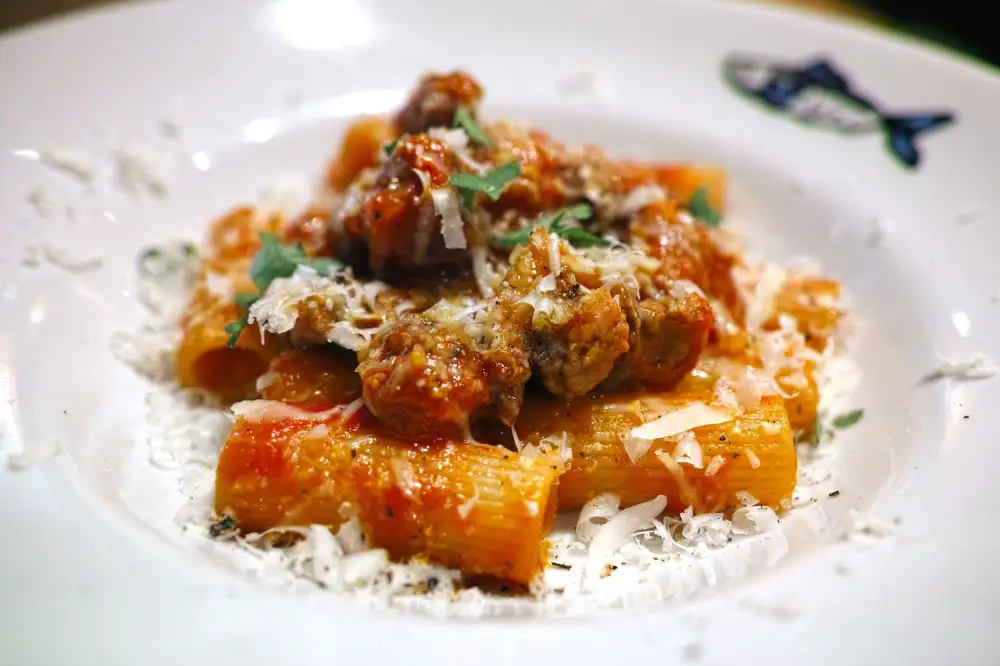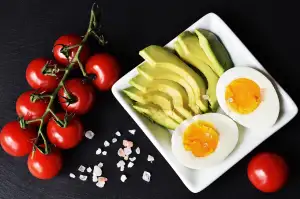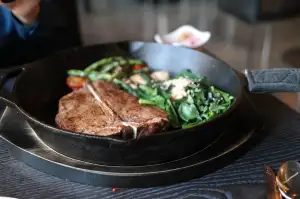Master the Art of Making Authentic Ragu: A Delicious Meat-Based Sauce Recipe

Ragu is a classic Italian meat-based sauce that has gained popularity worldwide for its rich and savory flavors. This hearty sauce is traditionally made by slow-cooking a combination of minced or ground meat, such as beef, pork, or veal, with aromatic vegetables, tomatoes, and seasonings. Ragu is known for its deep umami taste and thick consistency, making it a versatile sauce that pairs well with various pasta shapes like tagliatelle or pappardelle. Its robust flavor profile makes it a favorite comfort food for many food enthusiasts.
History and Origins of Ragu
Ragu, a rich and hearty meat-based sauce, originates from Italy. Its roots can be traced back to the 18th century in the region of Emilia-Romagna, particularly in Bologna. Originally known as "ragù alla bolognese," this iconic sauce was created by slow-cooking minced or ground meat with vegetables, tomatoes, wine, and broth. Over time, variations of ragu have emerged throughout Italy and even internationally, each region adding its own unique twist to this beloved culinary masterpiece.
Ingredients Required for Ragu
To make an authentic Ragu, you will need the following ingredients:
1. 500g ground beef or a mixture of beef and pork for added flavor.
2. 1 onion, finely chopped.
3. 2 cloves of garlic, minced.
4. 1 carrot, finely diced.
5. 1 celery stalk, finely diced.
6. 400g canned tomatoes or passata for a rich tomato base.
7. 1 cup beef or chicken broth for depth of flavor.
8. A splash of red wine (optional but recommended).
9. Salt and pepper to taste.
10. Fresh herbs like basil and oregano for a fragrant finish.
These ingredients come together to create a hearty and flavorful meat-based sauce that is perfect for coating pasta or serving over creamy polenta.
Step-by-Step Cooking Instructions for Ragu
1. Heat olive oil in a large pot over medium heat.
2. Add diced onions, carrots, and celery (known as mirepoix) and cook until softened.
3. Brown ground meat (typically a mix of beef, pork, and veal) in the pot.
4. Stir in tomato paste and cook for a few minutes to enhance flavor.
5. Pour in red wine and let it simmer until reduced by half.
6. Add canned tomatoes, broth, herbs (like bay leaves and thyme), salt, and pepper.
7. Bring to a boil then reduce heat to low, cover, and simmer for at least 2 hours.
8. Remove bay leaves before serving over pasta or polenta.
Enjoy the rich flavors of this traditional Italian sauce!
Tips and Tricks for Perfecting Ragu
To perfect your ragu, start by using a combination of meats like beef, pork, and veal for depth of flavor. Brown the meat well to develop rich flavors. Use quality canned tomatoes or tomato paste for a robust base. Simmer the sauce low and slow to allow the flavors to meld together. Add a splash of red wine for complexity and depth. Stir occasionally to prevent sticking and ensure even cooking. Season generously with salt and pepper, tasting as you go. For a velvety texture, stir in a knob of butter at the end. Let the ragu rest before serving to allow the flavors to intensify.
Serving Suggestions for Ragu
Ragu is a versatile sauce that can be paired with various types of pasta such as tagliatelle, pappardelle, or rigatoni to create a comforting and satisfying meal. It can also be used as a topping for polenta or served over creamy mashed potatoes for a hearty twist. For a lighter option, try spooning ragu over grilled vegetables or using it as a filling for lasagna. To enhance the flavors, sprinkle freshly grated Parmesan cheese and chopped parsley on top before serving. Accompany your ragu dish with a side salad dressed with balsamic vinaigrette to balance out the richness of the sauce. Enjoy this classic Italian dish with a glass of red wine like Chianti or Sangiovese to elevate the dining experience.
Variations and Adaptations of Ragu
While the traditional Bolognese ragu is a classic favorite, there are numerous variations and adaptations of this hearty meat-based sauce. In Italy, different regions have their own unique twists on ragu, such as the Neapolitan ragu which includes the addition of tomatoes and red wine for a richer flavor profile. In Sicily, they often add olives and capers to give the ragu a briny kick.
For those looking to explore vegetarian options, mushroom ragu is a popular choice that substitutes meat with a mix of flavorful mushrooms like porcini or shiitake. Lentils or textured vegetable protein can also be used as meat alternatives in ragu for a plant-based version that doesn't compromise on taste.
Additionally, some chefs experiment with adding spices like cinnamon or nutmeg for a hint of warmth, while others incorporate ingredients like pancetta or anchovies for an extra depth of umami flavor. The beauty of ragu lies in its versatility, allowing home cooks and professional chefs alike to get creative with ingredients and techniques to create their own signature versions of this beloved Italian sauce.
In conclusion, mastering the art of making authentic Ragu is a rewarding culinary journey that connects us to the rich history and flavors of Italian cuisine. This hearty meat-based sauce not only fills our homes with irresistible aromas but also brings people together around the dining table to savor its comforting taste. Whether enjoyed with pasta, polenta, or crusty bread, Ragu is a versatile dish that can be adapted to suit different preferences and dietary needs. So, embrace the tradition, experiment with variations, and let the magic of Ragu elevate your dining experience to new heights.
Published: 18. 03. 2024
Category: Recipes



